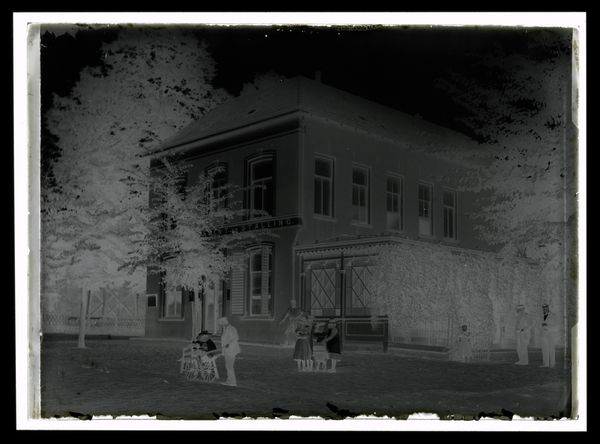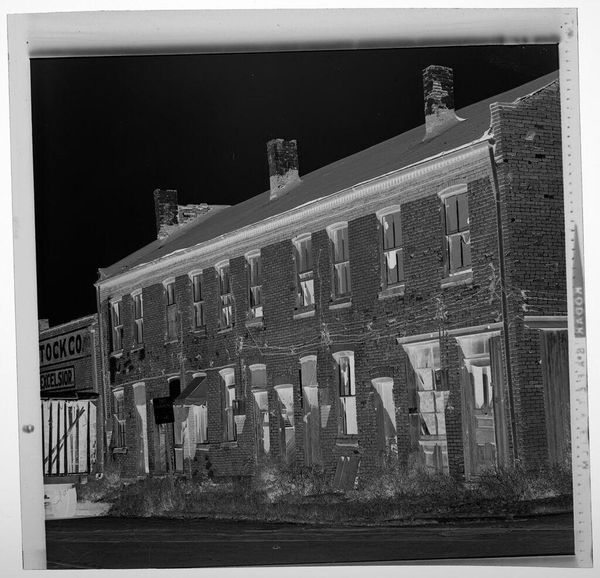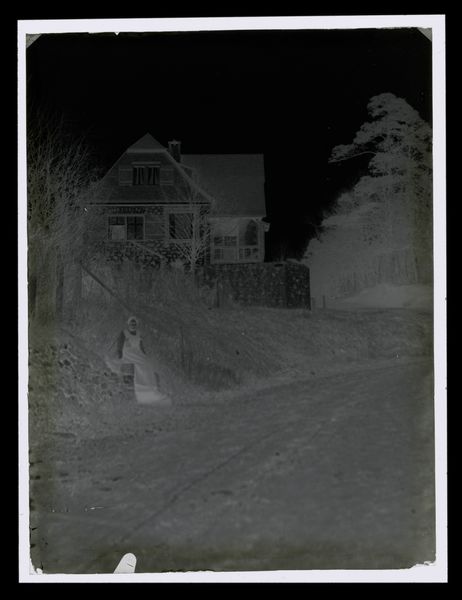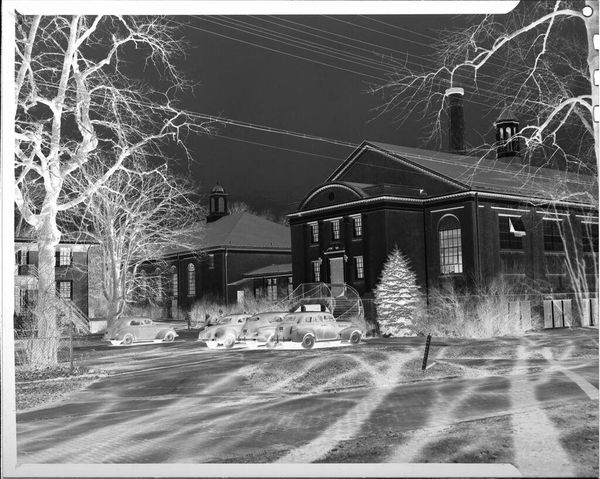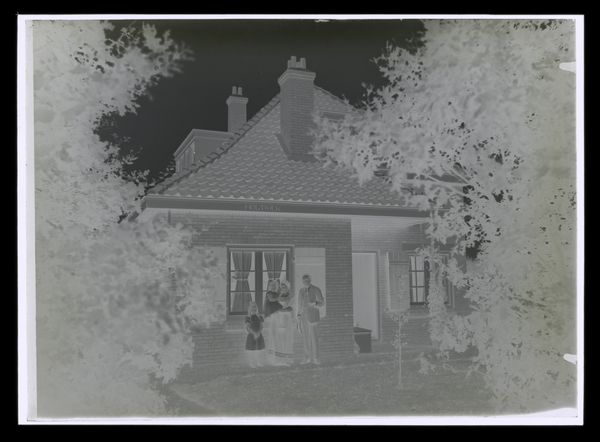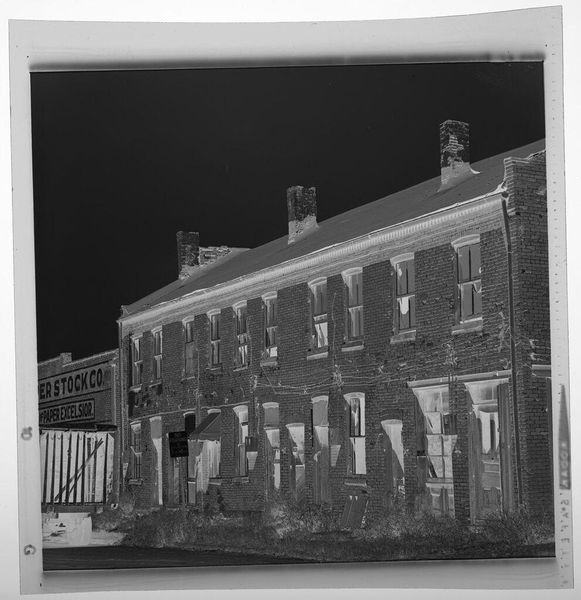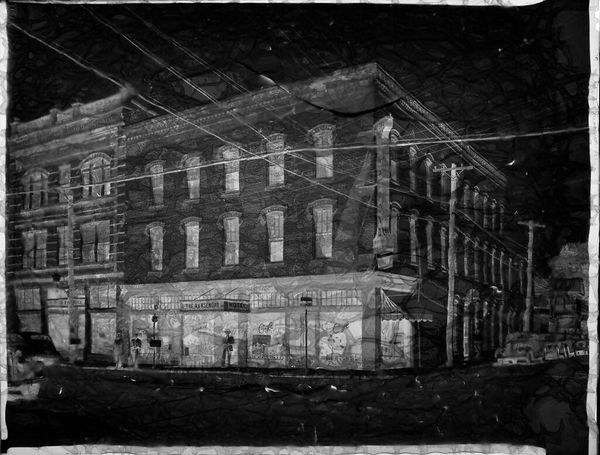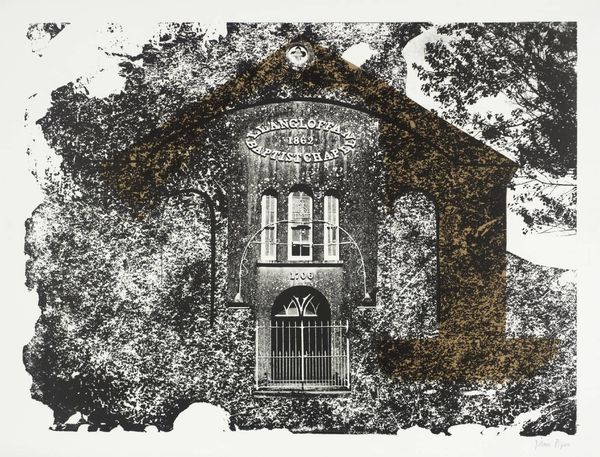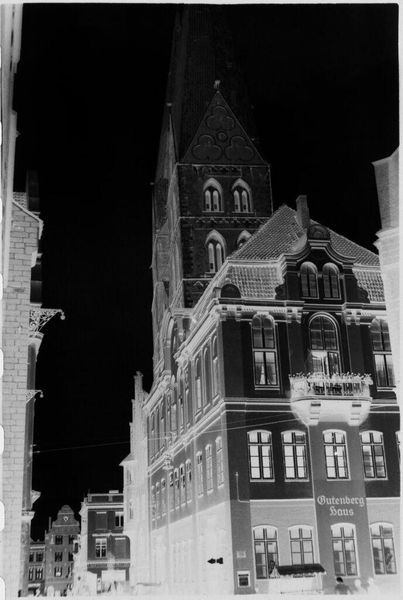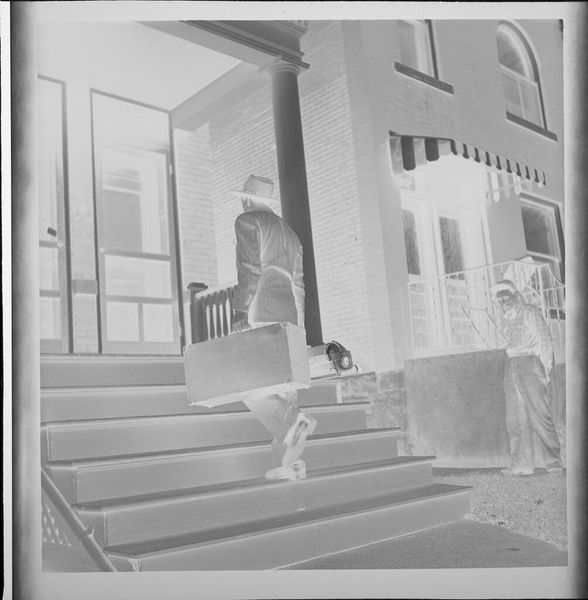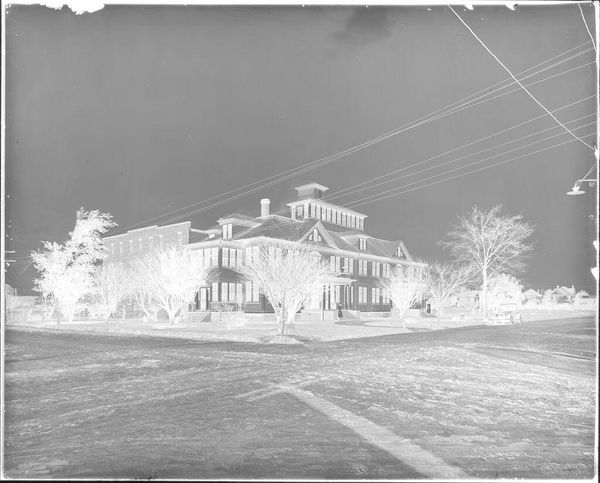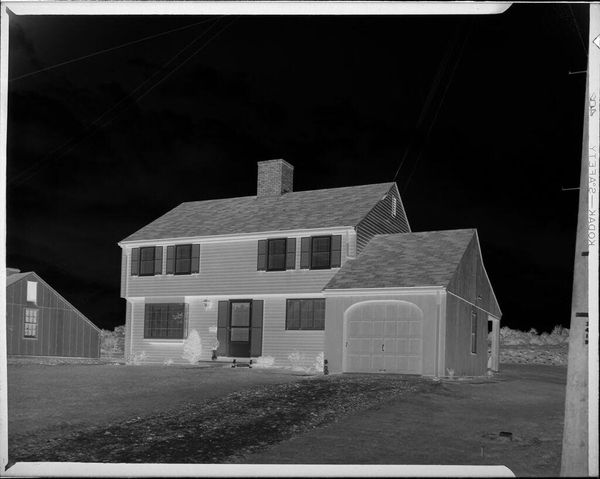
#
architectural landscape
#
brutalist
#
architectural photography
#
industrial style architectural design
#
architectural drawing
#
glass architecture house
#
architectural proposal
#
brutalist vide
#
architecture photography
#
architectural design photography
Dimensions: height 89 mm, width 118 mm
Copyright: Rijks Museum: Open Domain
Curator: This photographic negative, “Exterieur van een woonhuis” by Laurens Lodewijk Kleijn, dating from around 1865 to 1900, offers us a glimpse into a specific moment in architectural representation. Editor: It’s so ghostly! The inverted tones create this eerie atmosphere. What's striking to me is how mundane the subject is – just the exterior of a house – yet it's rendered so…unnervingly. What do you see in this piece? Curator: For me, it’s about process. Looking at it materialistically, it highlights the transition from hand-drawn architectural renderings to photographic documentation, and what the change from the individual act of architectural drawings to photographic impressions of built houses, meant socially. It questions architecture's relationship with industry and consumption at the turn of the century. The negative itself becomes an object, almost a relic, revealing the labor involved in producing architectural images. Editor: That's fascinating. So you're saying that the photograph is almost like a manufactured product itself, reflecting changes in labor and industry? Curator: Exactly. The choice of subject, the mundane house, reinforces this. It is mass housing on the cusp, no longer individually crafted for the owner, but manufactured on a massive scale with some architectural aspiration. It emphasizes the shift from unique artisanal construction to the reproducibility afforded by new technologies, which also brings forth issues related to quality and cost and affordability of housing at the time. What was architecture becoming, through a lens? Editor: That's a perspective I hadn't considered. I was so focused on the aesthetic, but now I see how much this photograph tells us about the means of production and its socio-economic implications. It certainly reframes how I understand architecture photography. Curator: Indeed. By focusing on the materials and the context of its making, we can decode deeper meanings about labor, technology, and even social changes within the art. Editor: That really adds depth to the viewing experience. It moves beyond just the surface level of representation.
Comments
No comments
Be the first to comment and join the conversation on the ultimate creative platform.
